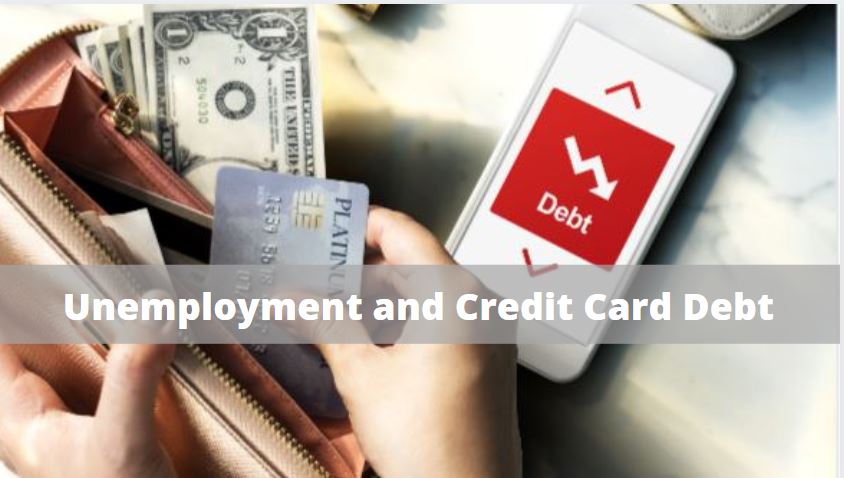
Unemployment and Credit Card Debt
Debt is a way of life for most Americans. And for those who aren’t taking advantage of federal and state benefits to make it through the recent economic downturn, it would make sense that credit cards could be the only alternative.
The COVID-19 outbreak swelled the ranks of unemployed Americans by more than 14 million, from 6.2 million in February to 20.5 million in May 2020. As a result, the U.S. unemployment rate shot up from 3.8 percent in February — among the lowest on record in the post-World War II era — to 13 percent in May. That rate was the era’s second-highest, trailing only the level reached in April (14.4 percent).
The rise in the number of unemployed workers is now substantially greater than the increase due to the Great Recession when the number of unemployed increased by 8.8 million from the end of 2007 to the beginning of 2010. The Great Recession, which officially lasted from December 2007 to June 2009, pushed the unemployment rate to a peak of 10.6 percent in January 2010, considerably less than the rate currently, according to a new Pew Research Center analysis of government data.
But here’s something interesting, and almost counterintuitive — despite unemployment rapidly growing to record levels throughout the U.S., the average amount of individual debt has consistently declined since the onset of the pandemic. Average credit scores are increasing at a higher rate than during this same period last year, and credit utilization—how much available revolving credit a consumer is using—is at a record low for the past five months, according to Experian data.
These numbers seem to indicate that consumers across the nation have made some fairly big changes to their financial habits over the span of just a few months. Since the beginning of the pandemic, consumers appear to be either paying down their debt or at least not adding to their overall balances. One could guess that spending was down significantly with people sheltering at home, and so budgets were a lot tighter.
With a little extra cash in hand, thanks to government programs, it wouldn’t be a stretch to think that some of that extra money went towards paying down debt. If you find yourself in that situation, here are some ideas to pay off your cards.
A Three-Step Plan to Get Rid of Credit Card Debt
Paying off credit card debt usually requires a certain amount of discipline, as well as a concrete plan. Consider these three steps for getting out of credit card debt:
No New Purchases
Commit yourself to pay cash for all future purchases or using a debit card. In other words, stay liquid. If necessary, cut up your credit cards to avoid the temptation of using them.
Set priorities
If you have multiple cards with balances, prioritize. There are two schools of thought here. One is to concentrate on paying off the card with the highest interest rate first and then move on to the next highest-rate card, etc. The other is to concentrate on the card with the lowest balance first, and then move on to the next lowest balance, etc.
The first strategy will likely result in saving more on interest. However, the second strategy may provide a psychological boost. Paying off a card in full can be very encouraging and can help motivate you to stick with your overall debt reduction plan.
One way to accomplish both is to transfer all your balances to one low-interest card.
Set Goals and Milestones
Determine to pay off all of your credit card debt by a certain date. Make the goal realistic—the sooner the better, of course, but if your goal isn’t realistic, you may become discouraged if you don’t achieve it.
The Next Step
Once your credit card debt is paid off, consider depositing the money you were putting toward paying off the debt into a savings account, so you can pay for future financial emergencies in cash, instead of charging them. Then, once you’ve built up an adequate emergency fund, consider investing a portion of the money in a retirement plan.
IMPORTANT DISCLOSURES
Material contained in this article is provided for information purposes only and is not intended to be used in connection with the evaluation of any investments offered by David Lerner Associates, Inc. This material does not constitute an offer or recommendation to buy or sell securities and should not be considered in connection with the purchase or sale of securities.
To the extent that this material concerns tax matters, it is not intended or written to be used, and cannot be used, by a taxpayer for the purpose of avoiding penalties that may be imposed by law.
Each taxpayer should seek independent advice from a tax professional based on his or her individual circumstances.
These materials are provided for general information and educational purposes based upon publicly available information from sources believed to be reliable– we cannot assure the accuracy or completeness of these materials. The information in these materials may change at any time and without notice.
David Lerner Associates does not provide tax or legal advice. The information presented here is not specific to any individual's personal circumstances. Member FINRA & SIPC.

